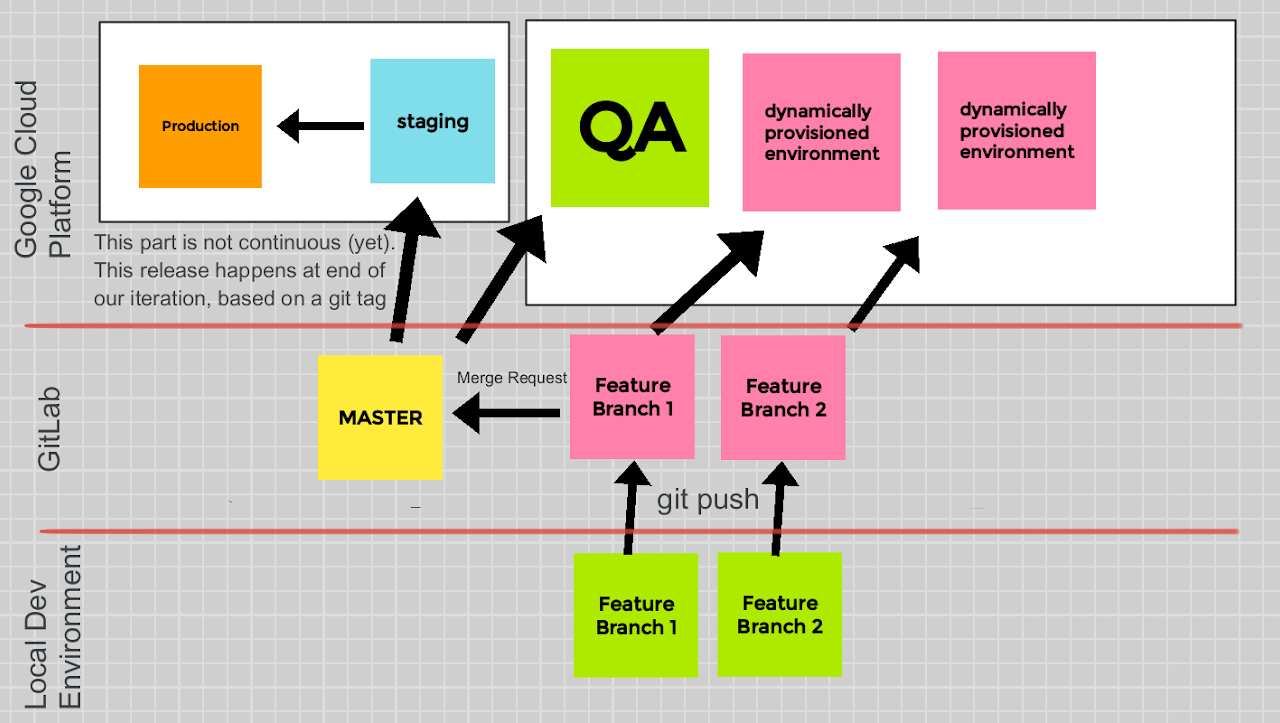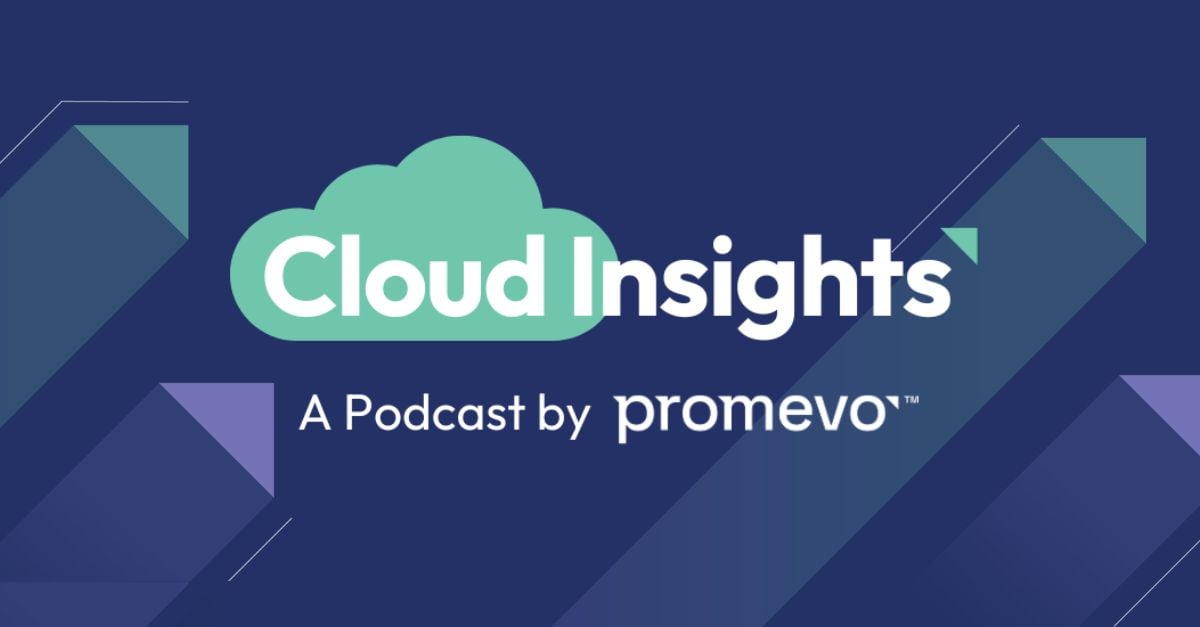4 min read
Optimize Your Google Cloud Platform with Promevo's Health Check Service
The Google Cloud Platform (GCP) gives teams the chance to move faster, be more agile, and innovate their businesses. By utilizing innovative Google...
The Promevo Engineering team is leveling up! Follow along as we chronicle our journey to achieving Continuous Delivery! In this article, we set the scene and describe some recent improvements we've made to our delivery model.
We host our SaaS product, gPanel®, on the Google Cloud Platform (GCP). More specifically, we run on Google App Engine. As a Google Partner, we are all in on GCP. Whenever we have a choice to make in terms of tooling or hosting, our default is to use GCP.
Our source code has been hosted on Google Cloud Source Repositories, and it has served us well as a sturdy git repository.
The gPanel® development team here at Promevo operates in one week iterations. We plan our work at the beginning of the week, we execute during the week, and we release at the end of the week. This is common practice across the tech industry.
Common? We don't want to be merely common! We want to be uncommonly awesome! Why should our customers have to wait for features to be batched up and delivered as a bundle, when we could put the feature in their hands as soon as it's ready? The seminal book, Accelerate, by Forsgren, Humble, and Kim, makes the case that tech organizations that embrace Continuous Delivery (CD) separate themselves from those that don't. The book supports (with data) the claim that teams that leverage CD outperform those that don't. This correlates strongly with a business advantage in the marketplace. I won't go deeper here, but suffice it to say that CD is what we are striving for here at Promevo.
One of the tactics that facilitates CD is trunk based development. "Yes", we said, "we want that too!" Using the aptly named website, https://trunkbaseddevelopment.com/ as a guide, we designed a model that works for us.
Developer experience is another important factor to us. We want onboarding to be as frictionless as possible. We want developers to be able to build new features and roll them out frequently and smoothly.
Using these principles to guide us, we drafted up a design of our ideal workflow and release pipeline. We put some boxes and arrows on a Jamboard, iterated a bit, then stepped back and nodded in agreement. "Yes", we agreed, "this is the way."
One of the glaring deficiencies in the GCP CI/CD ecosystem is a lack of tooling to support a Pull Request flow.
Thus far in Promevo's journey, we've managed to deliver without this. However, we've decided that it is too important to our vision to do without. Our team is projected to grow, and in the interest of quality, communication, and developer experience we are choosing to use the GitLab platform as a basis for our vision.
Pull Requests (called Merge Requests in GitLab) are a first class feature. Using this workflow is important to us, and it will be used as a gate before merging to our Main branch. The Developer submits a Merge Request, and it will require an approval.
The Approver can comment, suggest changes, insist on unit tests, etc. The Developer and Approver can iterate until it is suitable to merge.
But, our Merge Request stage has some secret sauce! And this may be the most exciting part of our flow!
The developer may spot something unexpected, and can push more changes until they are satisfied with the functionality. At this point, we can signal that we are ready for the Approver to review the code. The Approver can also visit the URL and see working software alongside the Merge Request.
This is game changing for everyone! As an Approver, you'll get so much more context than just a code diff. You can actually see what that UI change looks like, or take a back end feature for a spin before approving and merging it in.
Our CI process also runs immediately when a Merge Request is created. If any of our unit tests fail, the developer is alerted that there is still work to do before asking for review. This all supports the "shift left" mentality, which puts more onus for quality on the developer.
We want to flag any quality concerns as soon as possible, as opposed to the old time model of finding bugs weeks after code was written.
Having a Merge Request workflow will facilitate team growth, as it gives us a chance to gate changes and communicate expectations to new team members. For example, a reviewer may comment "Sorry, I can't approve this Merge Request, it doesn't appear that you've written any unit tests".
Ok, we've covered the first part of our delivery model. The developer has checked all the boxes, and gotten their Merge Request approved and merged. Now what?
Stay tuned for the next installment of "Our Quest for Continuous Delivery!"
Meet the Author
Promevo is a Google Premier Partner for Google Workspace, Google Cloud, and Google Chrome, specializing in helping businesses harness the power of Google and the opportunities of AI. From technical support and implementation to expert consulting and custom solutions like gPanel, we empower organizations to optimize operations and accelerate growth in the AI era.

4 min read
The Google Cloud Platform (GCP) gives teams the chance to move faster, be more agile, and innovate their businesses. By utilizing innovative Google...

2 min read
As companies scale and expand their offerings, IT professionals face the challenge of managing an increasingly complex ecosystem of identities,...

3 min read
If you're a data engineer, application developer, systems architect, or security professional looking to stay ahead of the curve in the world of...